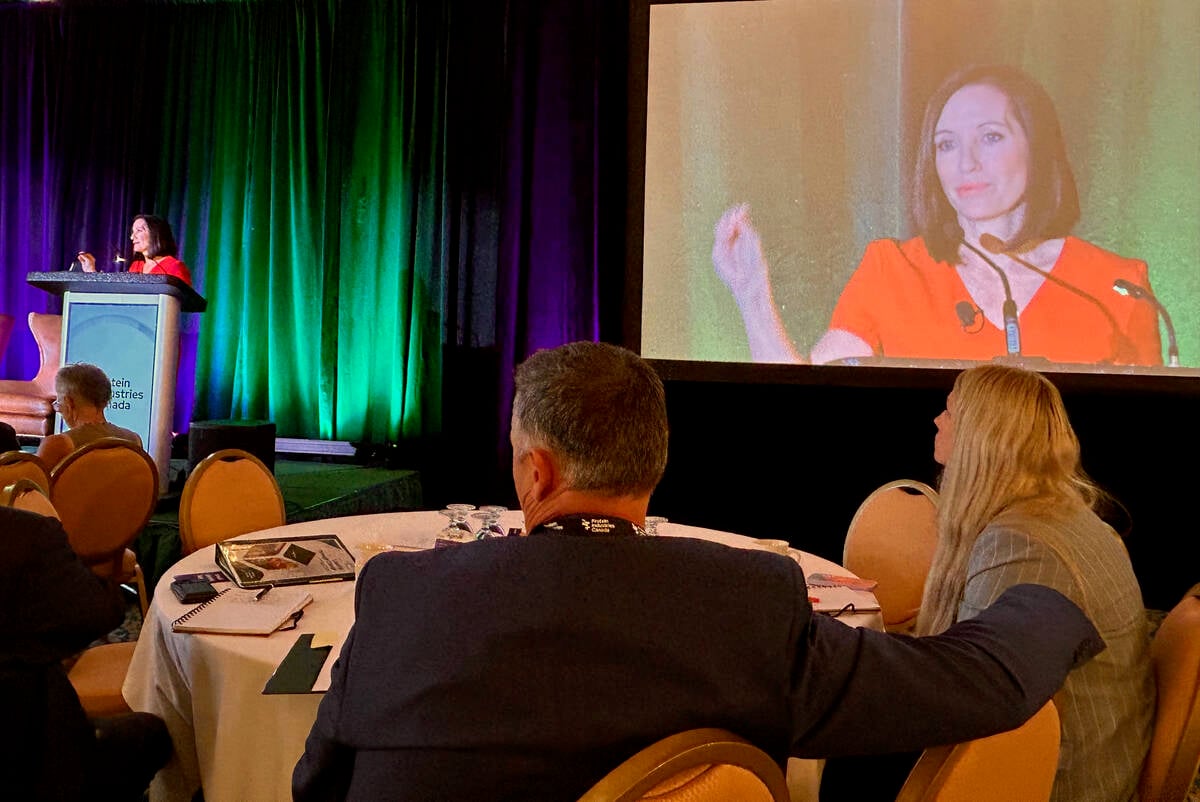Making inroads | Private sales continue to buoy industry
PONOKA, Alta. — Canada’s palate is changing as immigrant numbers swell and with that comes different customs and different foods.
Canadian meat goat producers cannot fill the growing market.
Stacy Connors of Busby, Alta., says the profit picture on her Boer goat farm is getting better all time.
Her meat goats fetched $1.30 per pound when she started in 2004. She now receives $2.50 per lb.
There is also more interest in breeding stock, but buyers need to be careful.
“We usually recommend if people are going to buy breeding stock they should go to the farm,” she said during a break at the Alberta Goat Breeders Association’s annual meeting in Ponoka.
Read Also

Canada told trade crisis solutions in its hands
Canadians and Canadian exporters need to accept that the old rules of trade are over, and open access to the U.S. market may also be over, says the chief financial correspondent for CTV News.
“There are still some good ones going to the auction, but you really have to watch because culls are going to the auction.”
Much of the business still relies on private sales to the ethnic community, so statistics can be sketchy.
However, Statistics Canada reports that nearly one million kilograms of goat meat had been imported by the end of May, compared to 1.5 million kg last year, mostly from Australia and New Zealand.
During the same period, federal and provincial slaughter plants handled 51,600 goats with an average carcass weight of 14 kg.
The number of goats has slowly increased, but there are fewer farms: 7,700 farms reporting 182,500 goats in 2002 compared to 6,000 farms reporting 225,461 goats in June.
Producers have much to learn when they join a new industry, said goat breeder and researcher Fred Homeyer of Robert Lee, Texas, who raises 20,000 meat goats on his Antelope Creek Ranch.
“The most important production criteria for making meat goat production is pounds of meat produced at weaning per doe per kidding,” he said.
Selecting feminine, healthy females capable of raising two to four kids is desirable.
“If the doe can’t successfully raise her kids without a lot of meat overall, your production program will suffer, regardless of how good a herd sire you have,” he said.
Boer goats received a reputation for poor mothering, he added, but too often producers kept them in small pens rather than on pasture. They often intervened too soon with tubing and bottle fed kids because they seemed weak.
“That kid that couldn’t get up for two weeks then becomes somebody’s herd sire,” he said.
Homeyer, an internationally accredited judge, said most meat graders rely on their knowledge of sheep, but goats build muscle and fat differently.
“Much of the research on meat goats is still done using the criteria on lamb production,” he said.
“There is no real formal way to analyze goat carcasses and analyze market goats in the United States.”
The U.S. Department of Agriculture uses the Institutional Meat Purchase Specification, a set of standards developed after the Second World War for procuring meat.
It includes specifications for grade, weight, fat, portion sizes and quality assurance and provides carcass cutting diagrams to meet specifications for restaurants, barbecues and roasting standards.However, he feels a better grading system is needed.
A goat carcass is more elongated and most of the meat is on the rear end. A young goat has light pink muscle around the flank whereas an older animal has darker meat.
Goats deposit fat differently from sheep with most being found around the internal organs.
“A lamb has some back fat measure, and based on the back fat measure, it tells you what yield and quality it is. Guess what, goats don’t have back fat,” said Homeyer.
“Goats are not sheep.”















